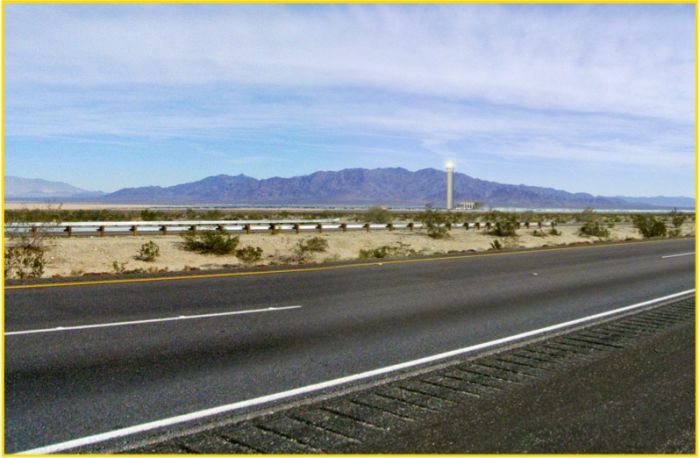BrightSource's plans to change 500MW Palen solar project to be heard Feb. 20
 Following BrightSource’s purchase of the 500 megawatt Panel Solar Electric Generation System the company has filed with the California Public Utilities Commission CPUC to convert the project from a solar thermal trough system to a solar thermal tower system. In the process, BrightSource also proposed reducing the land used and the water needed for the project. Yet the changes may face some opposition from locals and CPUC may require additional review.
Following BrightSource’s purchase of the 500 megawatt Panel Solar Electric Generation System the company has filed with the California Public Utilities Commission CPUC to convert the project from a solar thermal trough system to a solar thermal tower system. In the process, BrightSource also proposed reducing the land used and the water needed for the project. Yet the changes may face some opposition from locals and CPUC may require additional review.
This past Thursday (Feb. 14), the CPUC released more information that BrightSource filed with the commission over its plans for the site, which it bought from the now bankrupt Solar Millenium in July of 2012 for $10 million. The commission approved the project in December 2010, according to its site. But since BrightSource wants to make significant changes to the project, including related to how the power is generated at the plant, the commission is requesting additional information about the project.
The day following the release of information about the project changes, CPUC published its staff issues identification report. That report outlined concerns that the commission regarding the proposed changes to the PSEGS project, which include the impacts to wildlife at the site which include the Mojave fringe-toed lizard and the Mojave desert tortoise. BrightSource responded that the biological surveys for the Desert Sunlight Project should be sufficient to address concerns. But the commission called for more surveys. “Not having biological survey results for these areas would impact staff’s ability to analyze the modified project and could delay the schedule,” CPUC said in its issues report.
The commission also expressed concern over the impact of birds, including eagles. It called for “robust, multi-year survey data” about how eagles would interact with the plant. “The USFWS recommends that an Eagle Conservation Plan be completed,” CPUC said.
Another issue is the visual impact of the project. The solar trough system would have had much less of a visual impact, since the troughs are—at most—30 feet high, but the BrightSource power towers are each 750 feet tall, which would be visible for a long, long distance.
On the other hand, by changing to the power towers, BrightSource said the project would need less land—4,366 acres, compared to 3,794 acres for the trough system. It will also reduce the amount of land moved by 4.3 million cubic yards, and reduce the amount of water used during construction from 1,917 acre-feet per year to 1,130 acre-feet per water. And during operation it would fall 201 acre-feet of water annually, as opposed to the 300 acre-feet of water proposed under the Solar Millenium project. To address these and other issues, CPUC and BrightSource are holding a hearing and site visitation tomorrow (Feb. 20).



